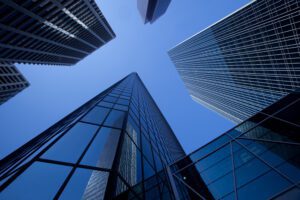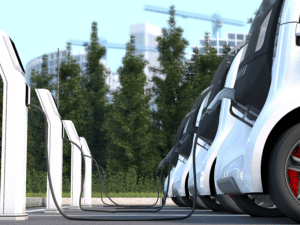As early as 1968, factories began to implement sensors to better monitor production processes, a simple precursor of the Industrial Internet of Things (IIoT). The 1980s saw the broad adoption of smart transmitters into industrial processes. This innovation enabled engineers to identify maintenance issues and reduce downtime, while improving the quality of manufacturing and process plant output.

At the same time massive economic deindustrialization, defined as the social and economic change caused by the removal or reduction of industrial capacity, was occurring across Europe. This coupled with the booming service industry made office spaces the centres of economic productivity. While the sector has been a keen adopter of, e.g., Building Management Systems (BMS) and other technologies, commercial real estate has lagged when it comes to implementing well-established and less sophisticated Industrial Internet of Things solutions that could also help to cut inefficiencies.
Take the best from IIoT and apply it to commercial real estate
As Covid-19 fosters more uncertainty among occupiers, the threat of additional lockdowns makes commercial real estate spaces less appealing, and the digital workplace (Work from Home) culture continues to grow, making these spaces run efficiently and safely is now more important than ever. So, here are a few things that I believe we can learn from Industrial Internet of Things that could further enhance commercial real estate spaces.
IIoT Tip #1. Improve maintenance with vibration monitoring
In a factory context, vibration monitoring helps maintenance engineers identify how motors and pumps are performing, oftentimes indicating which need replacing before they bring production to a grinding halt. Commercial real estate spaces can certainly benefit from predicting which motors are on the way out.
With larger buildings incorporating as many as two to three hundred motors, accounting for Heating, Ventilation, and Air Conditioning (HVAC) and plumbing, it’s easy to see the scale of a potential problem. However, the solution does not necessarily have to be complex. Today’s vibration monitors can direct connect to the cloud and are optimized for ease of installation and set-up.
IIoT Tip #2. Use pressure transducers to detect potential leaks
Earlier this year, the London HQ of a major electronics company was flooded by a burst pipe during construction. Footage of the incident shows water cascading down twelve floors, and while no one was hurt, it’s not hard to imagine the consequences in an occupied building. Leaks of this calibre pose a threat to electrical equipment and, more importantly, the safety of occupants and users in commercial real estate spaces.
Although this type of situation is much less likely to occur in factories, many contain smart pressure transducers that are very effective detectors of pressure changes in pipelines, enabling maintenance and service engineers to pre-emptively identify changes to flow and respond in a timely fashion.
Bringing this type of technology into the commercial real estate sphere could protect the value of investments as well as ensure occupant safety and comfort by preventing long-term damage to built environments. Even better, the pipework in most new buildings is already equipped with bosses so that transducers can be easily retrofitted.
IIoT Tip #3. Rely on data acquisition and analytics
If you’re looking to instigate broader changes to your Building Management System, then Remote Condition Monitoring (RCM) might be the way forward. RCM enables engineers to track data for on-site machines at a distance, incorporating multi-level sensors to integrate the whole value chain. Last year, Schneider partnered with Semiotics to develop RCM for rotational equipment like AC motors, from which building management could certainly benefit.
The technology also offers prospects for improving building safety – having population sensors in plant rooms, for instance, can signal if someone is in there alone, to better help safeguard against accidents.
How to get more from the Industrial Internet of Things
As a Master-level BMS EcoXpert™, we partner with Schneider Electric to deliver the best expertise and solutions to help you introduce the use of or expand the use of the Industrial Internet of Things. For more information, visit the Lloret Group website.
 |
Schneider Electric has been recognized as the world’s most sustainable corporation in 2021 by Corporate Knights Global 100 Index. |
EcoXperts are the Enablers of Buildings of the Future
The EcoXpert Partner Program is unique in its industry and made up of a best-in-class global ecosystem of expertise. Trained and certified by Schneider Electric, EcoXperts are the implementation arms of EcoStruxure and Wiser all over the world.
Buildings of the Future is about delivering solutions for the sustainable, resilient, hyper-efficient, and people-centric buildings that our customers need. For our EcoXpert partners, this unveils immense growth opportunities through the transition to end-to-end portfolio sales that will resolve our customers’ most critical needs. For our shared customers, this means that together with our EcoXpert partners, we will drive the building industry transformation and help our customers survive and thrive today – and tomorrow.
Visit EcoXpert to learn more. Discover Buildings of the Future.



